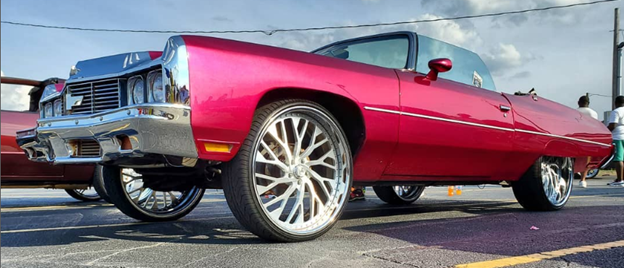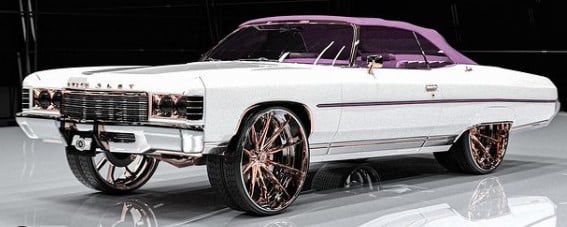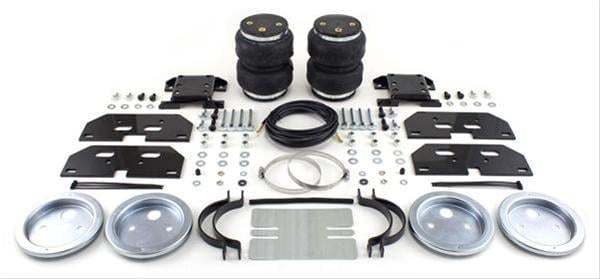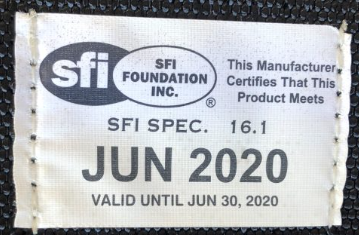

Your car’s suspension and steering systems have a lot of parts that work together to keep the car composed on the road and point it in the direction you intend. Control arms, ball joints, tie rods, struts, shocks, and a host of other pieces are all interconnected and engineered for maximum stability and control. How can you tell the difference between some of these components, and what do they do? Let's start with ball joints and tie rods.
What is A Ball Joint?
Ball joints are pivot points in your car suspension that connect the steering knuckles to control arms that attach to the vehicle subframe. They allow the wheel to rotate to turn the vehicle, and they're able to do this because they are constructed of a steel ball within a socket, providing a range of rotational motion in many directions.
You will usually find ball joints in the control arms of the suspension, and their range of motion allows the wheels to maintain a flat aspect to the road, preserving traction, improving handling, and resulting in enhanced safety for you and your passengers. In cars with multiple control arms in the suspension, there can be several ball joints, since each control arm may have a ball joint connecting it to the wheel carrier, hub, or spindle. You’ll also find small ball joints at the ends of the sway bar links on most vehicles.
Because of the forces exerted on ball joints, including the weight of the vehicle, steering forces, acceleration impulses, and breaking impacts, they do eventually wear out over time.
Worn-out ball joints can cause clunking noises, steering issues, uneven tire wear, and poor handling or compromised safety, so it’s important to check them at regular maintenance intervals and replace them if they are failing.

What is A Tie Rod?
Tie rods are part of the steering system, connecting the steering rack or center link with the wheel carrier hub and transmitting steering forces from your steering system to the wheels. Typically, you’ll find an inner tie rod and an outer tie rod on vehicles, with the inner tie rod connecting to the steering rack and the outer tie rod continuing to the wheel carrier.
Your vehicle's outer tie rod will usually be threaded on the side closest to the engine and will have a small ball joint that attaches it to the wheel carrier. The threading allows mechanics to adjust the length of the tie rod when setting the vehicle's alignment, so if the wheel needs to move outwards, the mechanic will unscrew the tie rod a turn or two, pushing the wheel outward and adjusting the "toe". The wheel side has a small ball joint, so the tie rod can move freely even when the wheel is turning or moving up and down.
The small ball joint on the wheel side of the tie rod receives a lot of punishment since it is responsible for transmitting steering inputs to the wheels and anytime there's a pothole, high-speed corner, or any other impact, it ends up sustaining some trauma. The small ball joint is where tie rods tend to fail, so there can be some confusion between ball joints and tie rods since the failure part on a tie rod is usually a ball joint.

How To Know When It’s Time to Replace You're vehicles Ball Joints And Tie Rod Ends
Diagnosing a bad ball joint or tie rod is a combination of listening, feeling, and looking at some of the parts on your front end. Here are a few symptoms of failing ball joints or tie rods that you can be aware of so that you can make an accurate diagnosis:
- Clunking or knocking noises from the front end of the vehicle are some of the first indicators of bad ball joints or tie rods. If you notice these sounds when driving over speed bumps or other imperfections in the road, then you may have a failure developing in one of these parts. Sometimes, the noises will be amplified when the steering wheel is turned, so this is an easy way to enhance the test.
- Steering issues can also indicate that tie rods or ball joints are on their way out. If your steering is sloppy, you have slight vibrations at speed, your car tends to wander on the road, or it is less accurate than it has been in the past, you may want to check your ball joints and tie rods.
- Uneven tire wear is another common symptom that points to potential ball joint or tie rod issues. Look for excessive wear on one side of the tire every time you do an oil change or tire rotation.
Once you’ve noticed these symptoms, you’ll want to do a visual and mechanical inspection of your suspension to determine if your ball joints or tie rods are the culprits. Use these steps to complete that assessment:
- With the car parked on even ground, point the steering wheel straight forward and visually inspect the direction of the wheels. Are they both oriented directly forward or is one pointing slightly off-center? If you have an off-center wheel, it could be a bad alignment, or it could be a ball joint.
- Place wheel chocks behind and in front of the rear wheels, jack up your car, and use jack stands to secure the vehicle so the front tires are not touching the ground. Put one hand on the top of the tire, one hand on the bottom of the tire, and try to move the tire in and out, rocking it vertically. If there is movement or you detect noises, that can indicate a bad ball joint.
- Remove the tire. Check for uneven tire wear before you set it aside and then visually inspect the ball joints. Is there grease leaking, is the dust boot torn, is it very rusty? If the answer is yes to any of these questions, it may be time for a ball joint or tie rod replacement.
- Use a pry bar to attempt to gently separate any of the areas connected by a ball joint. If you notice play in any of those parts, you likely need to replace that ball joint or tie rod.
If you replace ball joints, tie rods, or other suspension pieces, it is a good idea to get a wheel alignment completed since the new parts may change the geometry of the wheels. And whether you need a new ball joint, tie rod, or any other steering or suspension part, find it right here at JEGS.





